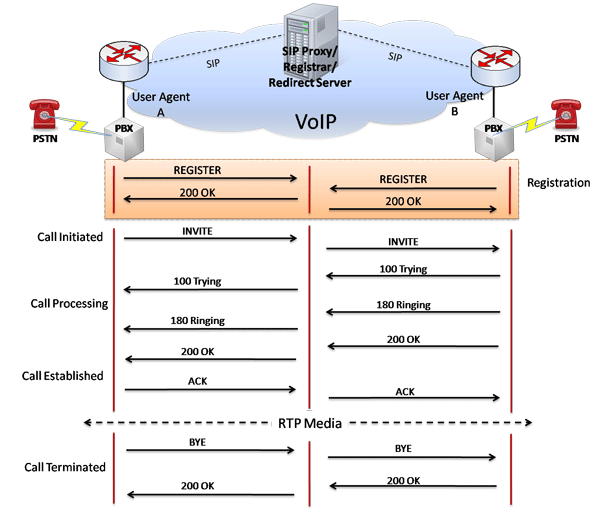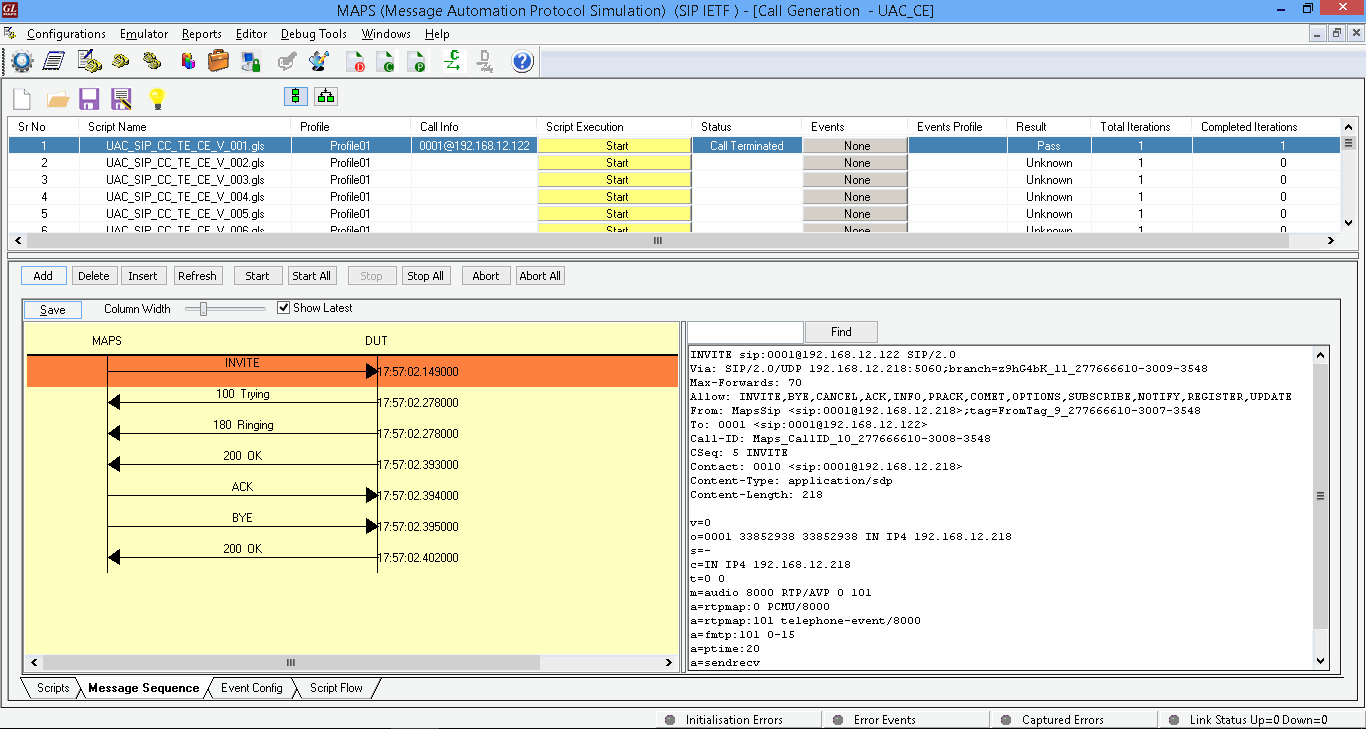GL Announces Enhanced SIP Protocol Emulator
Welcome to another January 2017 issue of GL Communications' Newsletter providing information and insight into our enhanced MAPS™ SIP Protocol Emulator that help user generate and receive SIP Signaling with traffic.

Overview
GL's Message Automation & Protocol Simulation (MAPS™) designed for SIP testing can simulate User Agents (User Agent Client- UAC, User Agent Server-UAS), Proxy, Redirect, Registrar and Registrant servers. This test tool/traffic generator can be used to simulate any interface in a SIP network and perform protocol conformance testing (SIP protocol implementations).
MAPS™ can be used to simulate any interface of the VoIP network. Single MAPS™ instance can act as more than one SIP entity at a time and can generate any SIP message on wire in VoIP network and hence equipment needed to test are reduced. MAPS™ SIP supports UDP, TCP, TLS transport types. Secure Real-time Transport Protocol (or SRTP) traffic supported over TLS (Transport Layer Security) Transport and TLS Library (OpenSSL) uses a Certificate and Key.
The MAPS™ SIP Conformance Scripts is designed with 300+ test cases, as per SIP specification of ETSI TS 102-027-2 v4.1.1 (2006-07) standard. Test cases include general messaging and call flow scenarios for multimedia call session setup and control over IP networks. Logging and pass/fail results are also reported. Test cases verify conformance of actions such as registration, call control, proxies and redirect servers.
GL’s MAPS™ SIP is also available in High Density version (requires a special purpose network appliance and PKS109 RTP HD licenses). This is capable of high call intensity (hundreds of calls/sec) and high volume of sustained calls (tens of thousands of simultaneous calls/platform).
MAPS™ SIP Specifics
MAPS™ SIP Simulating UAC
As seen in the figure below, MAPS™ SIP acts as UAC, initiating the call flow and receiving replies for the request messages from the DUT, thus testing UAS.

Call Generation
Call Generation option allows the user to simulate outgoing communications where an outgoing call is initiated by sending call control messages using proper scripts and profiles. The profile allows necessary parameters of call control messages to be changed during runtime.

Call Generation
Call Reception
Call generated from other entity can be automatically detected in call reception window by pre-setting the required scripts in the Incoming Call Handler window.

Call Reception
Proxy Conformance
With the set of Proxy Conformance inbuilt scripts, MAPS™ can be configured to act as UAC and UAS simultaneously so that entire Proxy testing can be automated.
Registration Conformance
DUT as Registrant generates REGISTRATION SIP messages. The set of Registrant Conformance inbuilt scripts in MAPS™ tests to ensure that MAPS™ acts as Registrar and processes the received registration request messages from Registrant (DUT).
Some of the Important Features
- Generates and processes SIP valid and invalid messages
- Supports complete customization of SIP headers, call flow, and messages
- Each SIP message template facilitates customization of the protocol fields and access to the various protocol fields from the scripts.
- Supports IPv4 /IPv6 and transport over UDP and TCP, and TLS for secure transport
- Handles Retransmissions of messages with specific interval
- Scripted call generation and call reception.
- Supports conference (third-party added), attended call transfer, and call forwarding.
- Supports transmission and detection of various RTP traffic such as, digits, voice file, single tone, dual tones, IVR, FAX, and Video in IP networks.
- Supports almost all industry standard codec types - G.711 (mu-Law and A-Law), G.722, G.729, G.726, GSM, AMR, AMR -WB, EVRC, EVS, OPUS, SMV, iLBC, SPEEX, and more. *AMR, EVRC, EVS, and OPUS variants require additional licenses. Click here for comprehensive information on supported codecs.
- Supports both RTP G.711 Pass Through Fax Simulation (PKS200) and T.38 Fax Simulation over UDPTL (PKS211) simulation over IP.
- Test IVR, and Instant messaging features.
- Transmit and receive pre-recorded video traces supporting video codecs like H.264, H.263, and VP8
- With normal RTP Maximum Simultaneous Calls - 2500, and Calls per Second - 250 (in high end server machines). Without RTP (only signaling) Maximum Simultaneous Calls - 70,000, and Calls per Second - 750 (in high end server machines)
- With MAPS™ HD RTP network appliance up to 20,000 endpoints per unit can be easily achieved (requires PKS109 and specialized hardware)
- Capability to generate more than 500 simultaneous video calls on Core i7 systems
- Enhanced with 64bit RTP support
- Support for T.38 Fax Simulation
- Support for TLS and SRTP
- Enhanced to support Java and Python CLI API’s
 Back to Newsletter Index Page
Back to Newsletter Index Page